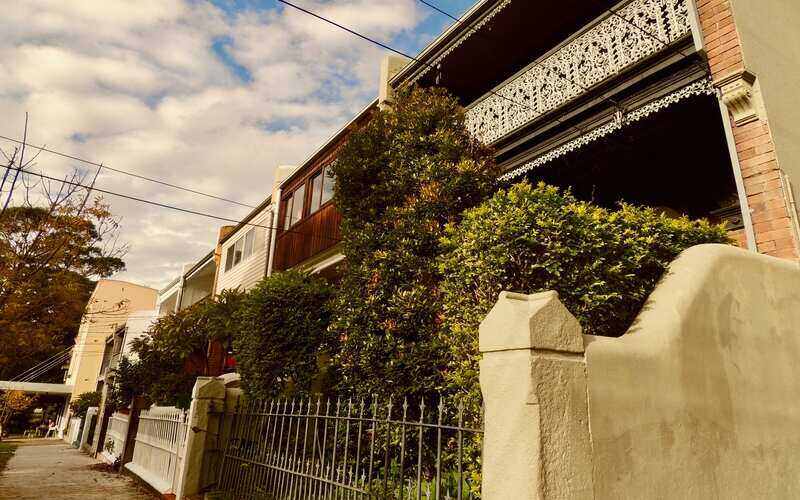Most of us groan and look the other way when it comes to anything tax-related, but when it comes to CGT, doing so could land you in serious financial strife.
So what is it, how do you calculate it, and when do you have to pay it?
What is capital gains tax?
A capital gain occurs when you sell an asset or investment, and the money from this sale is greater than what you paid for the asset, also accounting for expenses. Essentially, it’s the profit you make from an investment.
This capital gain has to be reported to the Australian Tax Office (ATO) and is taxed, just like any other income would be.
Although it has its own name and rules, your capital gains are reported with the rest of your taxable income, and CGT is part of your income tax.
CGT most notably applies to property and shares but can also apply to a range of things like trusts, contractual rights, and goodwill in a business.
Before you think about shipping your assets offshore, CGT can also apply to the sale of assets you’ve made overseas.
Importantly, your family home is typically exempt from CGT, provided you’ve never rented it out, used it to run a business, and it’s on less than two hectares of land.
Your car is also exempt from CGT, as is the selling of an asset you purchased prior to 20 September 1985, when CGT was introduced.
When do you have to pay capital gains tax?
When you bought and sold your asset is incredibly important when it comes to CGT.
That’s because if you hold an asset for longer than 12 months you’re entitled to a 50% discount on your capital gains as an individual or 33.333% as a super fund.
If you hold the asset for less than 12 months you’re required to pay CGT on the entire capital gain.
It’s also important to understand you pay CGT when you entered into a contract, not when you settle.
So if you sign off on selling an investment property in June 2019, and settle in August 2019, you need to report your capital gain in your 2018/19 tax return.
How do you calculate capital gains tax?
Working out how much CGT you need to pay is dependent on when the asset was purchased and when it was sold.
If you bought and sold an asset within 12 months, you simply add your capital gain to your taxable income, which is then taxed at the tax bracket you fall into.
If you’ve owned the asset or investment for longer than this, there are one of two ways you can calculate the CGT you’re required to pay.
Depending on your eligibility, you can choose whichever method yields the lowest possible capital gain.
The discount method
Minus the cost base of the asset from the sale. The cost base includes how much you originally paid for the asset, plus any expenses you picked up along the way. This equation will provide you with the gross capital gain.
Then subtract any capital losses from the gross capital gain. Then apply any discount available to you, whether it be 50% as an individual or 33.333% for a super fund.
This figure is your net capital gain, which you then add to your taxable income. Here’s a very simplified real-world example to make more sense of that.
Carl G. Tacks buys an investment property in 2005 for $200,000 and pay $10,000 in stamp duty. Over the course of owning the property, Mr Tacks racks up $5,000 in ownership costs. He sells the property in January of 2015 for $300,000 and pays another $2,000 in sale costs.
Adding the purchase price, as well as the various expenses means Mr Tacks' cost base comes to $217,000. Subtracting this figure from the sale of his property means his gross capital gain is $83,000.
As Mr Tacks has held his asset for longer than 12 months, he can apply a 50% discount to this figure. This means his net capital gain is $41,500. He then adds this to his taxable income, which is then taxed at the tax bracket he falls into.
The indexation method
If the asset you sold was purchased or acquired prior to 21 September 1999 you can use the indexation method to calculate your CGT. This method uses a multiplier that accounts for inflation on the cost base of your asset, but only up to 30 September 1999, regardless of if you sold later than this.
This multiplier is called the indexation factor and is calculated by dividing the consumer price index (CPI) at the time you sold your asset or investment by the CPI at the time you bought the property, rounded to three decimals.
This is something which is must easier explained in a real-world example, rather than the formula. Let’s revisit Mr Tacks.
Mr Tacks bought an investment property for $150,000 in March 1985, including stamp duty and various other fees. He sold said property for $600,000 in March 2005, all fees included.
Assuming Mr Tacks sold and settled in the same month in both cases, we divide by the CPI of when he sold by the CPI of when he bought. This is 82.1/37.9 which equals 2.166 (rounded to three decimal places).
Mr Tacks then multiplies what he paid for the property by this figure, to give him his inflation-adjusted price. So $150,000 x 2.166 comes to $324,900, which is his new cost base.
Subtracting this from what he sold the property comes to $275,100 and gives Mr Tacks his capital gain. He then adds this to his taxable income in the 2004/05 financial year.
What is a capital loss?
A capital loss is when you sell an asset or investment for less than what you bought it for, plus your cost base.
Obviously, you don’t pay tax on a loss because you didn’t make any money. If you made any capital gains in the year you can deduct this loss to reduce your taxable income.
If you didn’t make any capital gains in that year, all is not lost. You can carry this capital loss forward to other income years and offset it against future capital gains.
For example if you made a $50,000 capital loss in 2017/18 and a capital gain of $150,000 in 2018/19, you can subtract the previous year’s loss, leaving you with a $100,000 capital gain in 2018/19 (not taking into account any discount or indexation methods).
How to minimise capital gains tax?
CGT isn’t really something that can be avoided unfortunately and it can be expensive if you’re a successful investor.
The best way to potentially minimise your CGT is by being organised and keeping records in an effort to be able to claim for more in your cost base.
This can include holding onto any documents relating to the initial purchase of the asset or investment, and keeping receipts and records of any expenses incurred along the way.
Minimising your CGT is also dependent on the asset. Claiming for expenses in an investment property will be far easier than trying to increase the cost base of a trust for example.
Savings.com.au’s two cents
CGT can be a pretty complex subject but it’s something you should understand prior to actually buying an asset or investment.
This is because you should always have an exit strategy for whatever it is you’re buying, as well as an entry strategy.
If you want to minimise your CGT and maximise your cost base consider consulting a qualified tax advisor to ensure everything you’re claiming for is above board.
Further, consider consulting a professional in every step of the process of buying and selling an asset or investment.
Disclaimers
Savings.com.au does not provide tax advice. This material has been prepared by Savings.com.au and is for informational purposes only, and is not intended to provide, and should not be relied on for tax advice.
For tax advice relevant to you, visit the ATO or consult an independent tax advisor.

Ready, Set, Buy!
Learn everything you need to know about buying property – from choosing the right property and home loan, to the purchasing process, tips to save money and more!
With bonus Q&A sheet and Crossword!



 Bea Garcia
Bea Garcia
 Denise Raward
Denise Raward
 Harry O'Sullivan
Harry O'Sullivan
 Arjun Paliwal
Arjun Paliwal
 William Jolly
William Jolly

